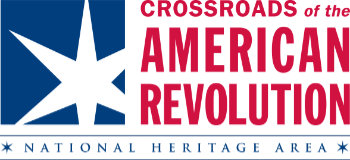Biography People
Mary Creighton Stratton Full Biography
I was born in 1762, to Hugh and Mary Creighton of Haddonfield, Gloucester, now Camden, County not far from the Delaware River and opposite Philadelphia. My father operated a fulling mill where he finished woolens, dyed fabrics, and washed clothing, and my mother operated the Indian King Tavern that they rented. When the war broke out, our tavern served the many people coming to Haddonfield for meetings of the Committee of Safety and the legislature. However, we worried we might lose our lease because our landlord was a Loyalist and his property was subject to seizure. Therefore, on May 1, 1777, my parents purchased three buildings providing excellent facilities for a large tavern.
As a Quaker pacifist, my mother was horrified in 1777 when my brothers joined militia units. On August 25 that year, shortly after we bought the new tavern, a British army landed at the head of Chesapeake Bay and threatened Philadelphia. The Assembly began meeting at our tavern on September 3, but after the American defeat at Brandywine the Legislature fled north to Princeton on September 24.
Increasing numbers of militiamen crowded into our town and Continental soldiers marched through on their way to garrison Fort Mercer at Red Bank. On October 21, some of the militiamen left to intercept hundreds of Hessians marching our way, while other militiamen went to Fort Mercer. The Hessians were not stopped and hundreds of the blue-coated, brass-capped men marched through town in front of our tavern. Several days later, after their defeat at the battle of Red Bank, these men, now wild, frightened, angry and accompanied by wagons full of their wounded came back through town on their way to Philadelphia. The next day our militia under Colonel Joseph Ellis returned, but the windows of our tavern were rattled by a terrible explosion, reported to be a British ship blowing up on the river. For weeks we heard loud reports of artillery fire as the British cannonaded Fort Mifflin. Through December, large numbers of our soldiers marched through town, often taking food and items they needed without paying for them and when officers stayed at our tavern they paid with paper money that was really almost worthless.
During February 1778, some British officers stayed at our tavern for four days. Then in March we heard about British foraging in Salem County and that many militiamen had revolted and were illegally selling produce to the British in Philadelphia. The Second New Jersey Regiment, under Colonel Israel Shreve came to help Colonel Ellis’s militia regain rebel control.
On April 5, a British force of 500 light infantrymen approached Haddonfield and Shreve and Ellis were warned in time to get their men and supplies out of town about ten minutes before the British stormed into town, breaking down doors and terrorizing residents, as they searched for rebel soldiers and munitions. I was just 16 years old and my mother had taken me to bed with her because I was sick and might need help in the night and at 3:30am we were awakened by the turmoil in the street. We were only half-dressed when British soldiers entered the room and began destroying our things with their bayonets and plundering the tavern. They took our clothing and the tavern’s sheets, pillow slips, and napkins. Thomas Carpenter, the militia paymaster, was staying with us but had not been warned. Fortunately, he was able to jump from a tavern window and escaped carrying the militia payroll.
A militiaman messenger named Moses Sage ran into the British troops and tried to gallop through them, but his horse was killed in front of our tavern. Sage was bayonetted repeatedly until an officer came, put his foot on Sage’s head, and asked him if he was alive. Finding that he was, the soldiers brought him into our tavern where my mother and I dressed his wounds, finding that he had been bayonetted thirteen times. Fortunately, he recovered. When the British soldiers left town, some of their stragglers set fire to two houses, including one belonging to a Quaker who had spent two months in prison for opposing the war. The town’s women carried water to help keep the fire from spreading.
When the British army left Philadelphia in June, it came through and ransacked Haddonfield on its way across New Jersey, meeting the Continental army on June 28 at Monmouth where the important battle took place. Life was fairly normal for the rest of the war, but our tavern was very busy. After the war, in 1787, I married Dr. James Stratton and left home to establish my own family. I lived at Stratton Hall, an elegant brick farmhouse on Raccoon Creek, Woolwich Township, Gloucester County, until my death in 1847. Today, Stratton Hall is a privately owned historic site open to the public and my childhood home is now the Indian King Tavern State Historic Site.
FURTHER RESOURCES
Descendants of Thomas McCulloch, Generations 1, 2, and 3 (Haddonfield, NJ: Historical Society of Haddonfield)
Cushing, Thomas and Charles E. Sheppard, History of the Counties of Gloucester, Salem, and Cumberland, New Jersey (Philadelphia: Everts & Peck, 1883), page 35.
Stewart, Frank H. Notes on Old Gloucester County, New Jersey (Woodbury: Gloucester County Historical Society, no date), vol. III, pp. 67-68.
Stone, Garry Wheeler Stone, Haddonfield Time Line, the American Revolution (Manuscript, Indian King Tavern Historic Site)
Watson, Penelope, Preservation Plan for the Indian King Tavern Museum (Bridgeton, NJ: Watson & Henry Associates, 2013), pp. 12-13.
